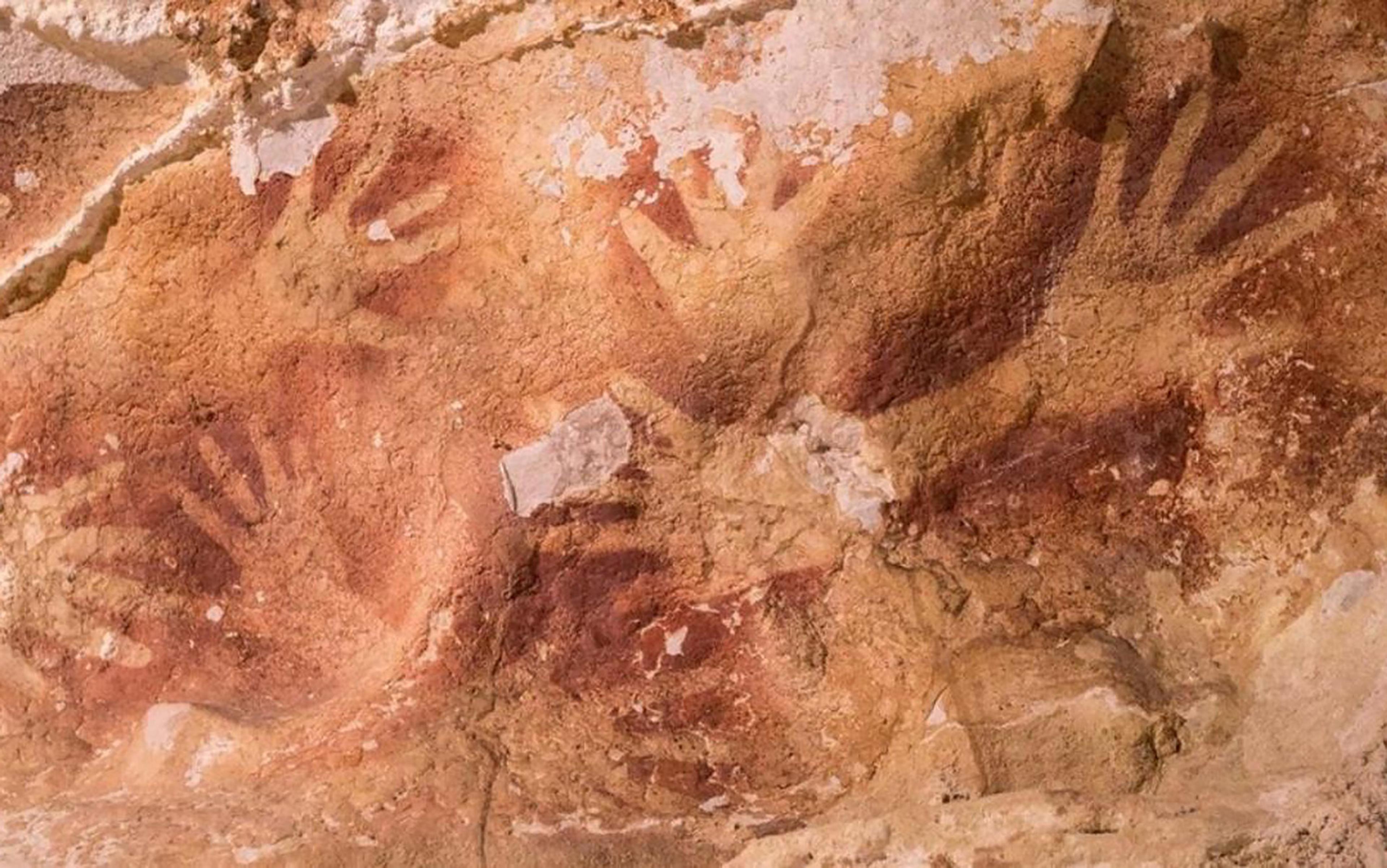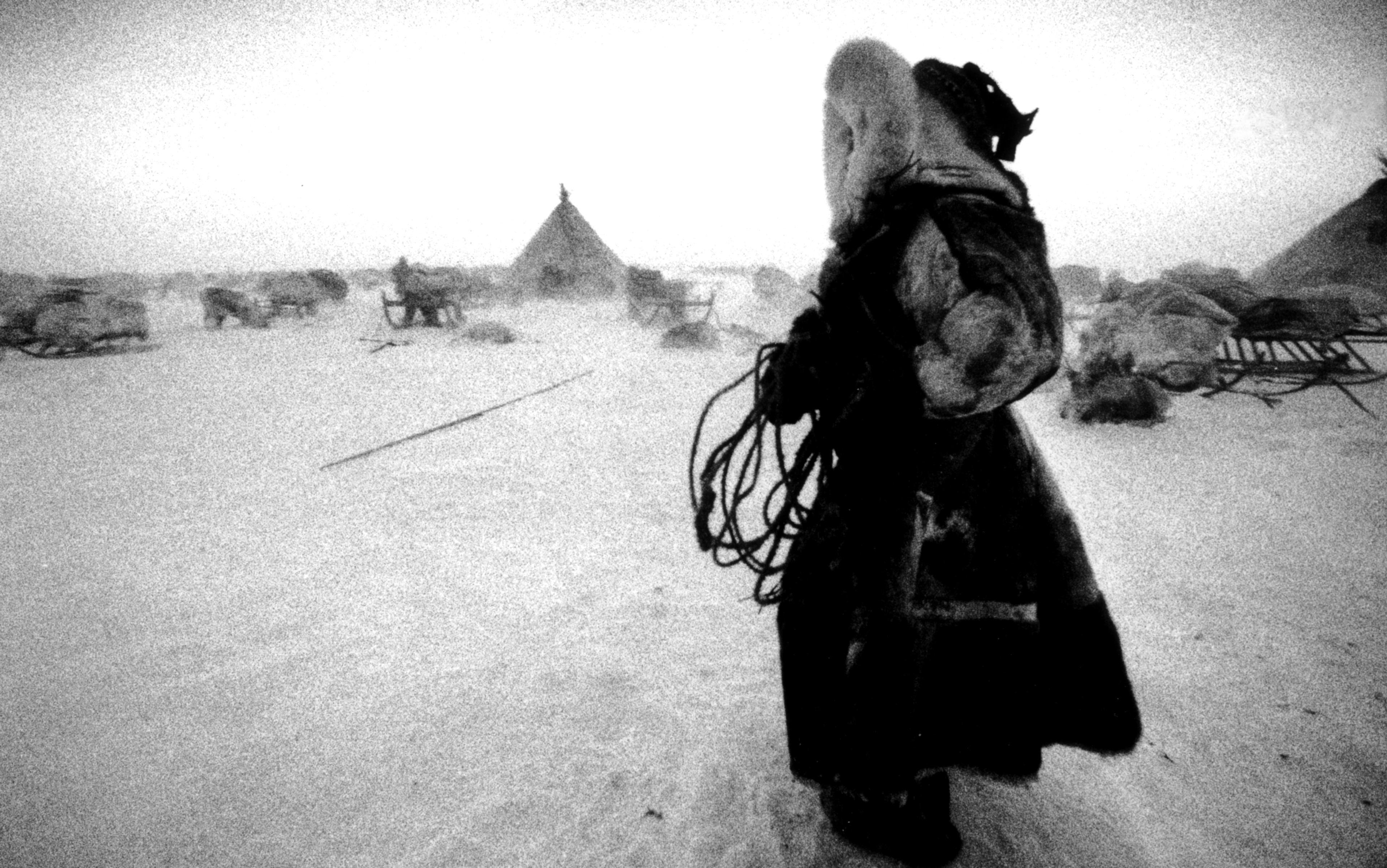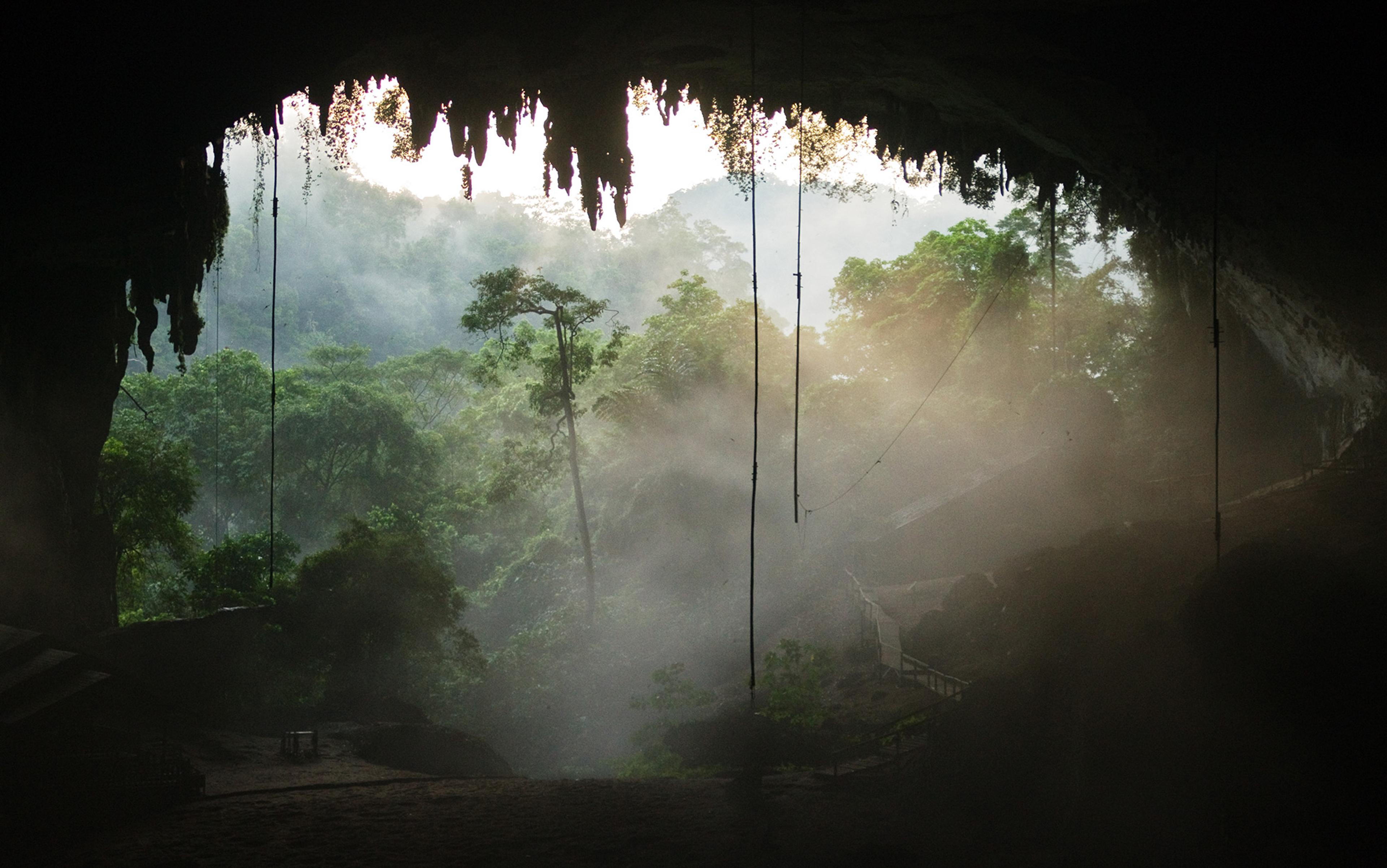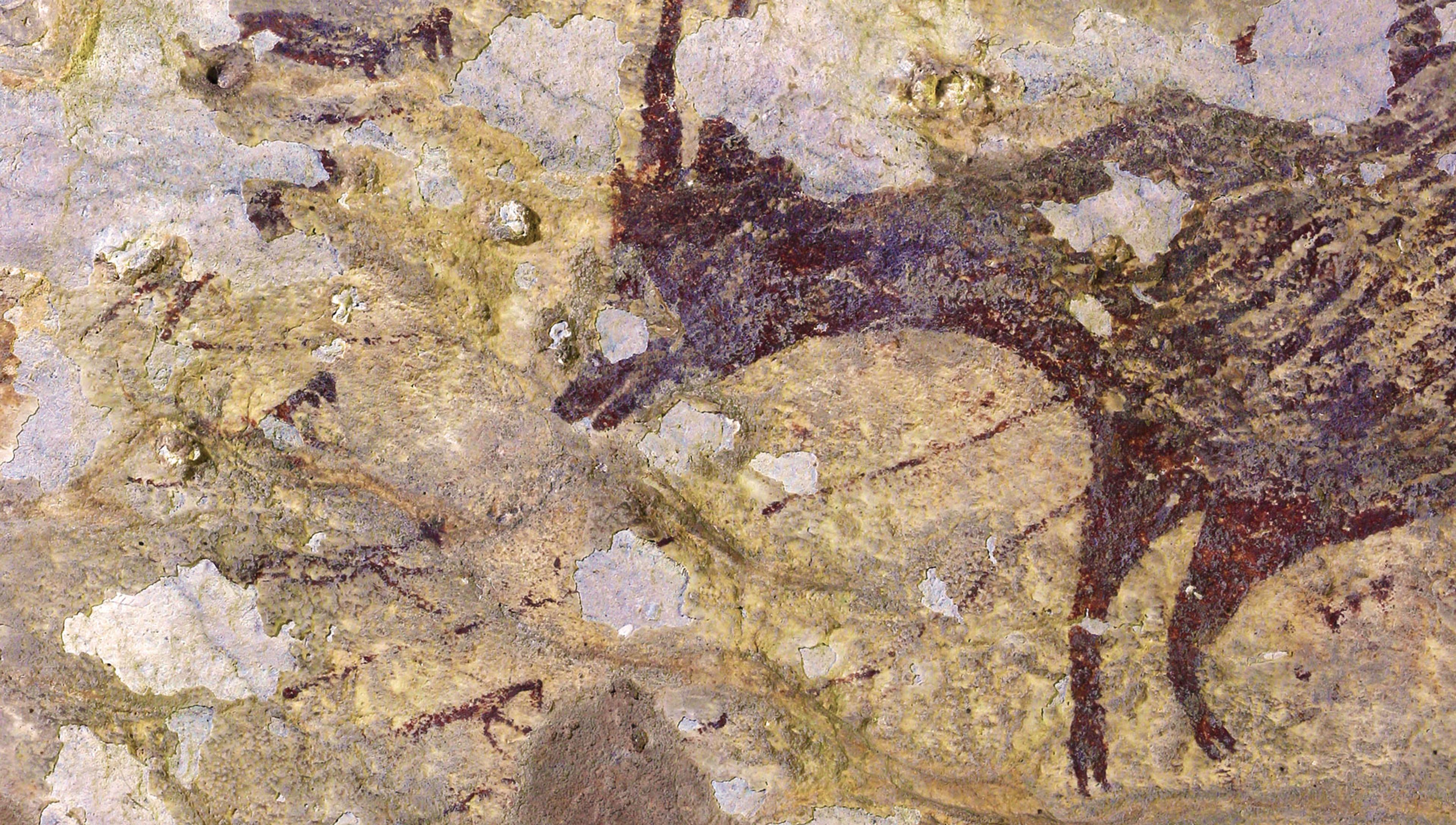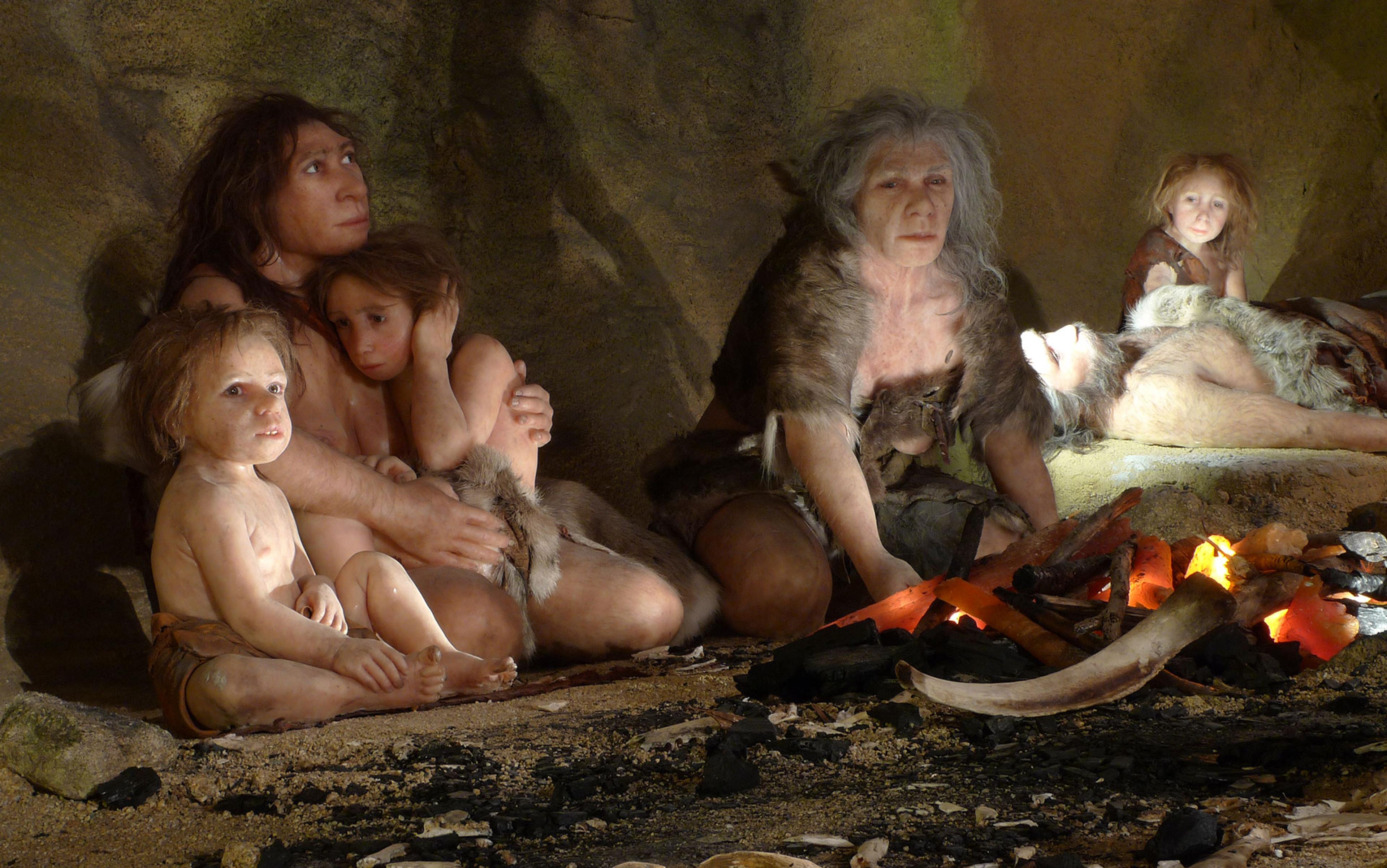Modern humans arose only once, in Africa, about 200,000 years ago. They then spread across Eurasia some time after 60,000 years ago, replacing whatever indigenous populations they met with no interbreeding. This is the ‘Out of Africa’ model, as it’s commonly known. In the 1990s, the hypothesis found widespread acceptance by palaeoanthropologists, especially when the first analyses of Neanderthal DNA seemed to indicate that Neanderthals and modern humans did not interbreed. But this popular idea is in need of revision, particularly given the number of important findings across Asia over the past few decades.
For instance, with the discovery of the ‘Hobbit’ (Homo floresiensis), a species that seems to have stood about four feet high, it became clear that several different hominin taxa were present across the landscape during the Late Pleistocene (12,000-127,000 years ago). Many new hominin fossils found over the past decade, particularly in China, are now tentatively dated as older than 60,000 years, calling into question the idea that modern humans migrated out of Africa only 60,000 years ago. Take the recent discovery of two modern human teeth found in the Luna cave in China’s Guangxi Zhuang Autonomous Region. When my research team and I dated the flowstones – rock that forms from precipitation inside a cave – directly above and below the location of the two human teeth using an absolute dating method called uranium-series, we found that the human teeth dated to between 70,000 and 126,000 years ago; a situation clearly impossible if modern humans moved out of Africa only 60,000 years ago.
So with findings such as these, what happened exactly? Where does the most current data suggest we came from? This is how the story is shaping up today.
The first question we should ask is why did modern humans – now thought to have emerged around 315,000 years ago – leave Africa to begin with? If a population is perfectly acclimated to a particular environment and has access to an abundance of resources, then there really is no reason to move or change. For instance, tarsiers – those cute nonhuman primates the size of your hand with huge, buggy eyes – have a set of teeth that has hardly changed over the course of millions of years, indicating that they found a niche that has worked for them – and happily stayed put.
However, tarsiers did move from Europe to their present home of Southeast Asia due to a changing environment. So what happened with humans? Some researchers have suggested that population density increased to the point where smaller human foraging groups were forced to explore new lands. Others have suggested that due to major environmental events in East Africa (eg, a major desiccation event around 60,000 years ago) humans were prompted to find greener pastures. Yet another explanation could simply be that early modern humans were following the large game that they relied on, and these food packages moved out of Africa across land bridges without realising that they were actually moving from one continent to another.
Humans need daily access to reliable fresh water, which appears to be absent from many coastal areas
This brings us to another question: by which route did modern humans move out of Africa? No clear routes across the Mediterranean from North Africa appear to be present, so the earlier dispersals out of Africa and into Eurasia might have been across the Arabian Peninsula. One possibility is that they crossed the Bab-el-Mandeb Strait to Yemen (which would have required a water-crossing even during major glacial stages), but more likely they travelled from northern Egypt to the Sinai Peninsula. Dispersals into the Levant began sometime after 200,000 years ago, as recent evidence from the Misliya cave in Israel indicates. Early modern humans reached as far north as Israel, as represented by sites such as Misliya, Qafzeh and Skhul. But most of the earlier dispersals appear to have followed a more southerly route, skirting the intimidating Himalayan mountain range and the Qinghai-Tibetan Plateau to eventually reach central China, mainland Southeast Asia and Australia. These earlier dispersals of Homo sapiens were much smaller in scale than later migrations. But as genetic technology to sequence much older DNA improves, we are beginning to discern traces of these earlier dispersals in the record. Indeed, a recent genetic study published in Nature found that about 2 per cent of the DNA of the modern Papua New Guinea peoples was represented by these earlier dispersals.
Then, around 60,000 years ago, humans started to move out of Africa in much greater numbers, moving simultaneously in both north and south directions. The northward expansion resulted in the peopling of Europe, Siberia, likely the Japanese archipelago and eventually across Beringia to arrive in the Americas. The southern route ran through the Indian subcontinent and Southeast Asia, Australia and eventually expanded across the Pacific. Early archaeological and genetic studies suggested that this southern route occurred very rapidly and closely followed the coast, but today we aren’t so sure, given the lack of archaeological evidence and an absence of extensive low-lying coastal shelves that would have been dry land during glacial periods when sea levels dropped. Further, humans, like most mammals, would have needed daily access to reliable fresh water, which appears to be absent from many coastal areas, and in fact is found only further inland. So there is a great amount of supporting evidence for movement along a southern route, but not necessarily restricted to a coastal dispersal.
When modern humans arrived in these different regions of Asia, they were likely surprised to find people who looked somewhat similar to them. Whom did modern humans meet upon arriving in Asia? A plethora of new studies coming out of Central Asia and Siberia suggest that Neanderthals did not stay put in Europe and the Levant. They travelled too, and we likely met them in Asia. Interestingly, palaeoanthropologists working in North Korea have written in the past that they might have found Neanderthal-like fossils. In Southeast China, the Maba partial skull has long been thought to resemble a Neanderthal – and probably would have been identified as such earlier on, had it been found further west.
Another group of hominins present in the region when modern humans arrived were traditionally referred to as ‘archaic Homo sapiens’. Because of the baggage that might be attached to calling a very human-like creature ‘archaic’, an increasing number of palaeoanthropologists have started to refer to these fossils as Homo heidelbergensis or simply mid-Pleistocene Homo. Evidence indicates that the European and African hominin fossils that tentatively date to between 300,000 and 500,000 years ago can be more easily assigned to the taxon H heidelbergensis, but the Asian fossils are less easily grouped. Some have suggested continuing to use the term archaic H sapiens or that another term, such as mid-Pleistocene Homo, might be more appropriate. That is, until new fossils are discovered and/or new ways of studying these fossils (which are not quite H erectus, but not quite Neanderthal or modern human either) are developed that could clarify the phylogenetic relationship between hominins from Africa, Europe and Asia that lived around the same time. The Asian picture is a bit cloudier given that it is still not clear whether these mid-Pleistocene Homo fossils are descended directly from the indigenous H erectus or whether they are a result of an earlier migration event, an occurrence that some have suggested could represent an early replacement event.
In the early 2000s, excavations at the Liang Bua cave site on the island of Flores in Indonesia resulted in the discovery of a series of very unusual-looking hominin fossils that are now thought to date to between 60,000 and 100,000 years ago. These fossils were known for their small stature and extremely small heads: hence the nickname the Hobbit (the first Lord of the Rings movie had just been released). However, following their discovery, questions arose as to whether they were a small isolated inbred population whose ancestors might have been H erectus or H habilis, or whether they were simply a modern human population that suffered from a variety of possible diseases ranging from microcephaly to Laron syndrome (or dwarfism).
The Denisovans might have been just a small foraging group rather than part of a larger population expansion
Although most researchers feel the evidence to support a new species designation to be overwhelming, it has never been conclusively decided. It was even recently suggested that H floresiensis might be a hybrid between H erectus, mid-Pleistocene Homo or a yet-to-be-determined hominin and modern humans. Most researchers believe that H floresiensis was isolated for a very long period of time with a great deal of inbreeding occurring over generations. However, Flores is not a very small island and modern humans passing through the region on their way to New Guinea and eventually Australia surely would have stopped by to explore and restock their supplies. It would be unusual if H floresiensis never met another hominin population over the course of perhaps tens or even hundreds of thousands of years. Thus, the hybrid postulation cannot be that easily discounted.
Genetic studies over the past decade or so have recognised a new hominin population: the Denisovans. The Denisovans were identified from the genetic analysis of a hominin finger bone and a tooth, while study of the morphology of the fossils was indeterminate as to which species might actually be represented. Given that the primary differences were identified through genetic analyses rather than through comparative skeletal analyses, the Denisovans were not assigned a new species name (eg, Homo denisovans), but rather are simply considered a ‘population’. A growing number of comparative skeletal studies examining the Denisovan hominin fossils with better-known hominin taxa are currently underway in order to be able to determine whether Denisovans already exist skeletally and we just haven’t identified them yet.
For instance, one study has identified similarities with the H erectus molars from the Early Pleistocene site of Sangiran in Indonesia and the late Middle Pleistocene site of Xujiayao in northern China that is represented by mid-Pleistocene Homo. Another study noted similarities in the Denisovan teeth with those from other Central Asian sites situated further west. With the great interest in determining whether Denisovans are already present skeletally, it should be only a matter of time before clear connections are made between the fossils from the Denisova cave in Russia with fossils that represent better-known taxa. The genetics, however, suggest that the Denisovan population might have been widespread in Southeast Asia, as attested to by the evidence that a low percentage of Denisovan DNA is present in modern-day human populations in Melanesia and even northern Australia. If this is true, then the Denisovan hominins from that cave might have actually been just a small foraging group that expanded northward rather than part of a larger population expansion through the north. The findings from Denisova are forcing palaeoanthropologists to change their view of how several different populations could have been present in Asia during the Pleistocene.
What happened when different hominin populations in Asia actually met? We can glean some clues through genetics, archaeology, and the fossils themselves. Several recent studies show conclusively that modern humans, Neanderthals and Denisovans regularly interbred, and that a ghost lineage (maybe H erectus) might have also contributed DNA too. Generally the percentage of Neanderthal DNA in modern humans is fairly low, in the range of 1-4 per cent, which seems to suggest that humans and Neanderthals interbred as far back as 270,000 years ago. But Neanderthal DNA in ‘Oase 1’, the c40,000-year-old fossil from the Peștera cu Oase in Romania, is estimated to have been as high as 9 per cent. That means that interbreeding was recent, perhaps only four to six generations prior to the birth of the Oase 1 fossil. Much of our evolutionary history then is marked by interbreeding with Neanderthals. Perhaps that gives some indication of what happened when hominin populations met.
But if there was interbreeding, what should we expect the offspring of a Neanderthal and a modern human to look like? Would the child have a protruding chin and a globular skull (defining characteristics of modern humans), plus pronounced brow ridges and a rounded occipital bun at the back of the skull (traits associated with Neanderthals)? Some argue that fossils from sites such as the Zhiren cave in southern China possess traits of both mid-Pleistocene Homo and modern humans, which suggests an early arrival of modern humans. Being able to identify what hybrids might look like is more difficult than simply taking half of the visible traits of one parent and half from the other, and blending them, so to speak. Studies of hybrids in nonhuman primates have offered some context for this, as unusual traits (eg extra teeth) that are not present in the parent population sometimes appear in the descendant population. Questions do remain however about exactly how this interbreeding between different species or subspecies might appear to the visible eye.
What else might be exchanged besides genes when different hominin populations meet? Here is where the archaeological record might be able to contribute. Symbolic behaviour appears through ochre pigments, perforated shells, stones, pendants and much else besides – they are signs that hominins were using and manipulating symbols. It’s long been thought that these are solely the products of modern humans, and are not a core part of other hominins’ behavioural repertoire. What’s strange is that the earliest modern humans to appear in Asia before the great dispersal from Africa 60,000 years ago have no associated evidence of symbolic behaviour.
Does this mean that the cave was intermittently occupied by all three groups?
Another interesting observation is that before Denisovans and now Neanderthals were identified through their DNA at the Denisova cave, the site itself was well-known to the archaeology community because of the abundance of evidence of Upper Palaeolithic symbolic behaviour (such as perforated artifacts that formed composite necklaces and bracelets). This raises the question: who left these artifacts? Was it the Denisovans, the Neanderthals, or were modern humans also present in the cave? If one of the former groups left these artifacts, does that mean they were capable of symbolic behaviour? If it was modern humans, does this mean that the cave was intermittently occupied by all three groups? The second point is that, as the later spread of modern humans included carrying with them these symbolic behaviours, why is there a paucity of perforated artifacts, red ochre and behaviours such as that in mainland Southeast Asia? Indeed, the rock art from Sulawesi in Indonesia aside, little to no evidence exists of symbolic behaviour from Late Palaeolithic sites in the region. So why did modern humans appear to have changed their behaviour upon arriving in Southeast Asia?
One component of the so-called modern human behaviour argument – which posits that these behaviours are restricted to modern humans – that continues to receive attention is the ability for us to build sturdy watercraft and navigate to points that are not visible from the place of departure. Although initial reports suggested that the site of Mata Menge on Flores island in Indonesia could only have been peopled by seafaring H erectus, researchers have since raised doubts about this argument. However, the peopling of areas such as Australia and the Japanese archipelago were clearly by watercraft. In the case of Japan, currently thought to have been peopled around 40,000 years ago, it is generally assumed that these migrations were by modern humans. It has always been thought that only modern humans could have initially peopled Australia given that watercraft would have been necessary. However, thanks to the recent genetic findings of Denisovan traces in modern Melanesian and northern Australian populations, seafaring by Denisovans cannot be entirely discounted. Still, it would help if we could first figure out what Denisovans and their archaeological sites actually looked like before drawing any conclusion about Denisovans as voyagers.
There is still a tremendous amount of research to do in Asian palaeoanthropology. The increasing number of contributions coming out of Asia is forcing scholars to rethink how they view various modern human origin models. Indeed, just this January, a study in Science indicated that the earliest modern humans in Asia date to between 177,000 and 194,000 years ago from the Misliya cave in Israel. It seems as if, every few weeks now, a new hominin fossil, genetic study, archaeological site, or re-dating of old sites is reported from the vast Asian continent, a continent that still has large swathes of areas yet to be intensively explored. If nothing else, the picture as it appears thus far is much more complicated than the old Out-of-Africa models: there were multiple earlier dispersals from Africa, and much more interbreeding between species than we once thought. The story of ourselves, it turns out, becomes richer the more we know about it.
